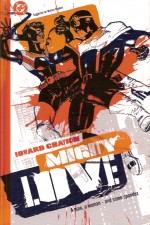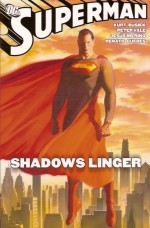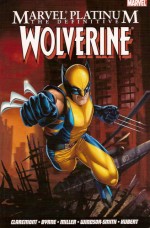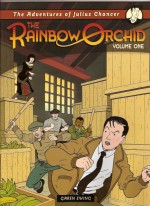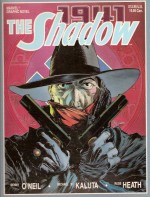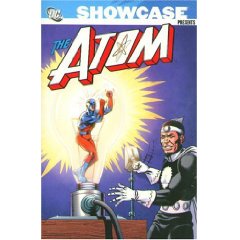
By Gardner Fox, Gil Kane & various (DC Comics)
ISBN13: 978-1-4012-1363-3
Julius Schwartz had already ushered in the Silver Age of American Comics with his Showcase successes Flash, Adam Strange and Green Lantern, but his fourth attempt to revive and revitalize a “Golden Age Great” had stalled when Hawkman (debuting in Brave and the Bold #34, February/March 1961) could not find an immediate audience. Undeterred, he persevered with the Winged Wonder, but also moved forward and for Showcase #34 (September/October 1961) retooled the pint-sized strongman of the 1940’s Justice Society of America into a fascinating science-fiction champion and eternal underdog.
Ray Palmer was a young physicist working on the compression of matter and a teaching Professor at Ivy Town University. He was wooing career girl Jean Loring, who wanted to make her name as a trial lawyer before settling down as Mrs. Palmer (c’mon, it was the 1960s). One evening Ray found an ultra-dense fragment of White Dwarf Star Matter, which took his researches in a new direction. By converting some of the degenerate matter into a lens he could shrink objects, but frustratingly they always exploded when he attempted to restore them to their original state.
As fiercely competitive as his intended bride, Ray kept his progress secret until he could perfect the process. Meanwhile the couple took a group of youngsters on a science hike to Giant Caverns, where a cave-in trapped the entire party. As they all lay trapped and dying Ray secretly activated his reducing lens to shrink himself, using the diamond engagement ring he was carrying to carve a tiny fissure in the rock wall into an escape hole. Fully expecting to detonate any second, he was astounded to discover that some peculiar combination of circumstances allowed to him to return to his normal six foot height with no ill effects.
With his charges safe he returned to his lab to find that the process only worked on his own body; all other subjects still catastrophically destructed. Somewhat disheartened he pondered his situation – and his new-found abilities…
And thus ended ‘The Birth of the Atom!’, a taut and intriguing short tale written by Gardner Fox and dynamically illustrated by Gil Kane and Murphy Anderson, which was supplemented by the spectacular ‘Battle of the Tiny Titans!’ wherein a six-inch tall, teleporting alien went on a crime-spree in Ivy Town, the unwilling slave of petty thief Carl Ballard.
Jean was called in to defend a bank-teller accused of embezzlement – after all, the woman claimed her cash-drawer was emptied by a little genie – and Ray determined to clandestinely help her using his newest innovation, a suit made from White Dwarf material, which could alter not only his height but also his weight and mass. The story is thrilling and entrancing, not to mention astonishingly inventive (including such gimmicks as the Atom traveling along telephone wires) but the art – allowing Kane to combine the usual long-shots, mid-shots and close-ups with glorious, balletic, full-body action poses – made this and all subsequent Atom adventures a symphony of human dynamism. Some text pages featuring a potted history of the original Al Pratt Atom and the science behind that phone trick filled out Showcase #34… and Schwartz was back on track with another instant hit.
The second try-out issue opted for a complete single story. ‘The Dooms From Beyond!’ is a spectacular tale of witches, curses and murderous trickery in pursuit of an inheritance, capped with biographies of Fox, Kane and Anderson – a true rarity in a time when publishers still preferred their staff worked in anonymity.
The final Showcase try-out again featured two adventures, and the first of these ‘Prisoner in a Test Tube!’ introduced a recurrent theme in the Tiny Titan’s career: Cold War Espionage. The American/Soviet arms-and-ideas race figured heavily in the life of physicist Ray Palmer and in the collegiate circle of Ivy Town where even Jean’s father was a scientist carefully watched by both CIA and KGB. In this pensive thriller a brief moment of East-West détente allowed the Reds to replace a visiting Hungarian Professor with a deadly doppelganger until the Atom took a diminutive hand, whilst it was back to basics with super-science and criminal conundrums in the mystery of ‘The “Disappearing Act” Robberies!’
Editor Schwartz knew he had a sure thing. Barely breaking stride to count the sales figures the bi-monthly Showcase stint segued into a bi-monthly feature title. The Atom #1 debuted with a June/July 1962 cover date featuring a spectacular full-length yarn entitled ‘Master of the Plant World!’ which pitted the hero against Jason Woodrue (later famed as the Floronic Man), an extra-dimensional botanist who had enslaved Earth’s supernatural plant spirits in a schemes to conquer our world.
‘The Oddest Man on Earth!’ was another superb scientific mystery, counter-pointed by the return of Carl Ballard in the action-packed revenge thriller ‘The Prisoners who Vanished!’ and with #3 the hero finally found a costumed arch-foe as the flamboyant thief Chronos began his obsessive career in ‘The Time Trap!’
That issue was doubly significant, if singly themed. The second tale, ‘The Secret of the Atom’s Lamp!’ introduced Ray’s mentor and colleague Professor Alpheus Hyatt and his “Time-Pool” a six-inch energy field that opened on to other eras. Hyatt thought it an intriguing but useless scientific oddity, occasionally extracting oddments from it by blindly dropping a fishing line through it. Little did he know his erstwhile student was secretly using it to experience rousing adventures in other times and locations, such as this initial exploit in which the diminutive daredevil visited Arabia in 850AD to discover the true story of Aladdin. This charming, thrilling and unbelievably educational yarn set a format and high bench-mark for some of the Atom’s best and most well-loved exploits.
Our hero joined the Justice League of America with issue #14 (September 1962) and the Atom #4 (December 1962/January 1963) featured ‘The Machine that Made Miracles!’ a prototypical crossover in which the hero helped League mascot Snapper Carr solve a baffling mystery that had aliens at the bottom of it, whilst ‘The Case of the Innocent Thief!’ was a cool crime procedural yarn, as once more a client of Jean Loring’s occasioned some clandestine legal aid from the Tiny Titan…
Issue #5 opened with a sharp science-fiction thriller as the Mighty Mite journeyed to a sub-atomic civilisation in ‘The Diamond of Deadly Dooms!’ (with a delightful art contribution from the great Mike Sekowsky) whilst ‘The Specter of 3000-Moons Lake!’ tested the hero’s detective skills in an eerie tale of bogeymen and bandits.
‘The Riddle of the Two-Faced Astronaut!’ in #6 was actually a crafty crime-caper, but the real highlight was another Time-Pool tale when our hero met and mastered infamous rogue Dick Turpin in ‘The Highwayman and the Mighty Mite!’, whilst the next issue formed part of Editor Schwartz’s charm offensive to promote Hawkman when the Winged Wonder met Tiny Titan in a full-length spectacular, world-threatening epic ‘The Case of the Cosmic Camera!’
Justice League villain Dr. Light opened a campaign to pick off his foes piecemeal when he subjected the Atom to a ‘Lock-up in the Lethal Lightbulb!’ in #8 and master craftsman Sid Greene inked the deft mystery of ‘The Purloined Miniatures’ which completed that issue. ‘The Atom’s Phantom Double!’ was another high-tech fantasy, complimented by ‘The Seaman and the Spyglass!’ (Greene again) wherein the Mighty Mite proved instrumental in Hans Lippershey’s invention of telescopes and helped explorer Henry Hudson shape the destiny of the USA, courtesy of the ubiquitous Time-Pool.
‘Ride a Deadly Grenade!’ was another breathtaking Cold-War spy-thriller, whilst ‘The Mysterious Swan-Maiden!’ was just a crafty scam, but Atom #11 truly tested the Mighty Mite’s deductive mettle with both ‘Trouble at the Ten-Year Club’ and the Greene inked fantasy thriller ‘Voyage to Beyond!’
A technological master-criminal briefly made our hero his weapon-of-choice in ‘Danger… Atom-Gun at Work!’ and the charming Time-Pool tale ‘The Gold-Hunters of ’49!’ allowed the Tiny Titan to meet his literary hero Edgar Allan Poe in #12, with which issue Greene became the regular inker (necessitated by Hawkman finally getting his long-awaited – Murphy Anderson illustrated – solo-feature).
Chronos returned in #13’s ‘Weapon Watches of the Time-Wise Guy!’, and Anderson returned to ink the procedural drama of ‘I Accuse Ray Palmer… of Robbery!’, but super-science was increasingly the order of the day as our hero had to endure ‘The Revolt of the Atom’s Uniform!’ in #14 and both spies with ‘Illusions for Sale!’ and the crafty Hyper-Thief in ‘The Super-Cracker who Defied the Law!’ in #15.
Atom #16 was another mind-boggling novel where yet another criminal scientist brought about the ‘Fate of the Flattened-Out Atom!’ and this immensely dynamic treat for eyes and imagination concludes with #17’s ‘Case of the Hooded Hijackers!’ (wherein Gil Kane displayed his love of gangster movies and talent for caricature) and finishes big with another magical Time-Pool extravaganza when the Tiny Titan visits the year 1888 and retrieves ‘Jules Verne’s Crystal Ball!’
The Atom was never a major name or huge success, but from reading these witty, compelling tales by Gardner Fox, where Gil Kane first mastered the fluid human dynamism that made him a legend, you’d be hard-pressed to understand why. This is sheer superhero perfection. Why not try a bit… just a tiny bit?
© 1961, 1962, 1963, 1964, 1965, 2007 DC Comics. All Rights Reserved.
